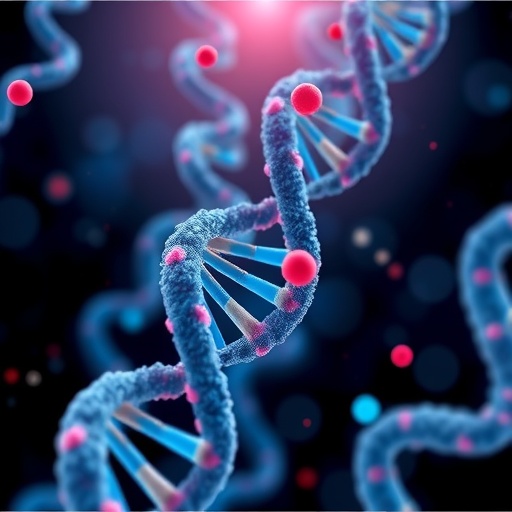The scientific community is preparing for a landmark event in the field of cellular biology and translational medicine—the Second World Congress on Targeting Extracellular Vesicles (EVs). Scheduled for October 15-16, 2025, in the vibrant city of Valencia, Spain, this congress promises to be a melting pot of innovation and cutting-edge research. It will bring together an international cadre of thought leaders, clinicians, and industry pioneers dedicated to unraveling the complexities and harnessing the therapeutic potential of EVs. These nanoscale messengers, secreted by virtually every cell type, have surged to the forefront of biomedical research due to their pivotal roles in intercellular communication and disease modulation.
The overarching theme of the conference, “Bridging Two Frontiers: Mitochondria & Microbiota,” reflects a paradigm shift in how we perceive cellular crosstalk and systemic homeostasis. Extracellular vesicles serve as critical conduits linking mitochondrial function—a central hub of cellular energy metabolism and apoptotic regulation—with the expansive and diverse human microbiota ecosystem that governs immune responses, nutrient metabolism, and overall health. Integrating these domains offers unprecedented opportunities for developing novel diagnostic biomarkers and targeted therapeutic interventions, which could revolutionize personalized medicine.
Keynote lectures will underscore the emerging mechanistic insights into EV biogenesis, a complex and tightly regulated process that involves the maturation of endosomal compartments and plasma membrane budding. Understanding the molecular underpinnings of EV formation is crucial, as it governs their cargo specificity and ultimately their biological functions. Sessions will delve into the latest advances in EV isolation and purification techniques, emphasizing scalable methods such as size-exclusion chromatography, ultracentrifugation, and affinity-based capture—all vital for ensuring the reproducibility and translational validity of EV-based research.
.adsslot_y1wHi3qYKf{width:728px !important;height:90px !important;}
@media(max-width:1199px){ .adsslot_y1wHi3qYKf{width:468px !important;height:60px !important;}
}
@media(max-width:767px){ .adsslot_y1wHi3qYKf{width:320px !important;height:50px !important;}
}
ADVERTISEMENT
Therapeutic development remains at the heart of this congress, with presentations highlighting innovative strategies that utilize EVs as vehicles for drug delivery and regenerative therapies. Leveraging the inherent biocompatibility and tissue-targeting capabilities of EVs, researchers are engineering vesicles loaded with nucleic acids, proteins, or small molecules aimed at modulating mitochondrial dysfunction or microbial dysbiosis—two pathological hallmarks underpinning a broad spectrum of diseases including neurodegeneration, metabolic syndromes, and cancers.
Another facet of the congress will showcase cutting-edge technologies that augment the characterization and application of EVs. High-resolution flow cytometry, nanoparticle tracking analysis, and advanced imaging modalities enable precise phenotyping and functional assays of vesicle populations, paving the way for standardization across laboratories. Furthermore, novel platforms for EV engineering and delivery will be spotlighted, featuring synthetic biology approaches and nanomaterial conjugation to enhance targeting efficacy and payload stability.
The intersection of mitochondria and microbiota through EV-mediated pathways also opens fresh investigative avenues concerning host-microbe communication. Emerging evidence delineates how mitochondrial-derived vesicles influence microbial communities and, conversely, how microbiota-derived EVs impact mitochondrial dynamics. This bidirectional dialogue is pivotal in maintaining systemic homeostasis and offers promising therapeutic targets across immune-mediated and metabolic diseases.
Conference chairs Dr. Consuelo Borrás and Dr. Marvin Edeas emphasize the significance of multidisciplinary collaboration in accelerating breakthroughs. By convening experts from the realms of molecular biology, microbiology, clinical sciences, and bioengineering, the event aims to catalyze innovative dialogue and foster integrative approaches that transcend traditional research silos.
Attendees will have the opportunity to engage with a diverse array of formats including oral presentations, poster sessions, and technology showcases. There is an open call for abstracts and innovation proposals, encouraging contributions that span foundational biology to translational applications. Contributions highlighting the molecular characterization of EV cargo, their roles in mitochondrial homeostasis, or the modulation of microbial ecosystems through EVs are highly sought.
Crucially, the congress also intends to address existing challenges in EV research, such as nomenclature standardization, vesicle heterogeneity, and intravesicular cargo variability. By embracing these complexities, the scientific community hopes to establish consensus guidelines and foster reproducibility, which are imperative for clinical deployment.
The event’s timing could not be more opportune, as EV research is rapidly maturing from a niche focus area into a robust translational discipline with tangible clinical implications. Innovations born out of this congress are expected to influence diverse fields ranging from oncology and neurology to infectious diseases and metabolic disorders.
Researchers, clinicians, and industry leaders alike are encouraged to leverage this unique platform to propel EV science forward. The exchange of ideas within this congress will undoubtedly spur novel hypotheses, collaborative projects, and next-generation diagnostic and therapeutic technologies.
Subject of Research: Extracellular vesicles in mitochondrial and microbiota communication, with a focus on diagnostics, targeted drug delivery, and regenerative medicine.
Article Title: Second World Congress on Targeting Extracellular Vesicles Bridges Mitochondrial and Microbiota Frontiers
News Publication Date: Not specified (event scheduled for October 15-16, 2025)
Image Credits: Credit: Second World Congress on Targeting EVs
Keywords: Exosomes, Vesicles, Mitochondrial function, Mitochondrial DNA, Mitochondrial biogenesis, Human microbiota, Microbiota
Tags: cellular communication mechanismsdiagnostic biomarkers developmentEV biogenesis insightsextracellular vesicles researchintercellular signaling pathwaysmicrobiota and immune responsesmitochondria microbiota connectionpersonalized medicine advancementsSecond World Congress 2025therapeutic potential of EVstranslational medicine innovationsValencia medical conference





